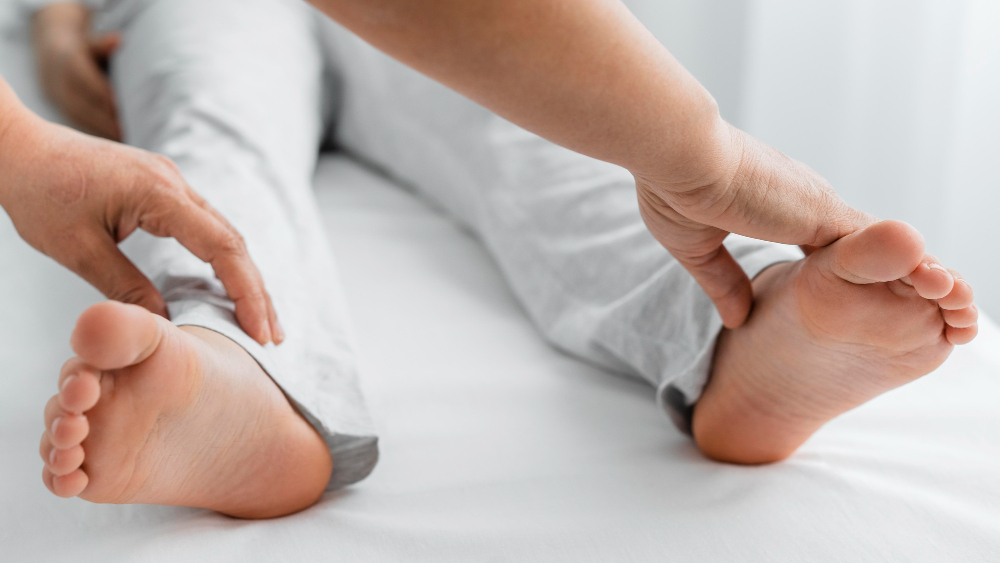Are you worried that flat feet will ruin your life or keep you from living pain-free? You’re not alone—flat feet (also called fallen arches or pes planus) are surrounded by prevalent myths and misconceptions that lead to unnecessary anxiety and, sometimes, poor treatment choices.
As Indore’s leading orthopedic experts, including Dr. Tarkit Modi, we’re here to set the record straight and provide evidence-based advice you can trust.
Below, we’ll debunk the most common myths about flat feet and give you real answers, so you can feel empowered in your healthcare journey.
Myth 1: Flat Feet Always Cause Pain
The truth? Not everyone with flat feet experiences pain. Many people live their whole lives with flat arches and never need treatment. Research shows that approximately 15.7% of children globally have flat feet, yet the vast majority never experience significant pain or functional limitations.
Why do some people have pain?
Discomfort can happen if:
- There’s unusual strain on the muscles and ligaments,
- Extra weight or improper footwear puts stress on the feet,
- There’s an underlying condition (like arthritis or tendon dysfunction).
Studies reveal that flat feet affect an estimated 5 million people in the United States, but pain is not inevitable. Among adults, flat foot prevalence ranges from 3-10%, with many cases remaining completely asymptomatic throughout life. Not every flat foot needs “fixing.” Pain—not the shape of your foot—should guide your treatment decisions.
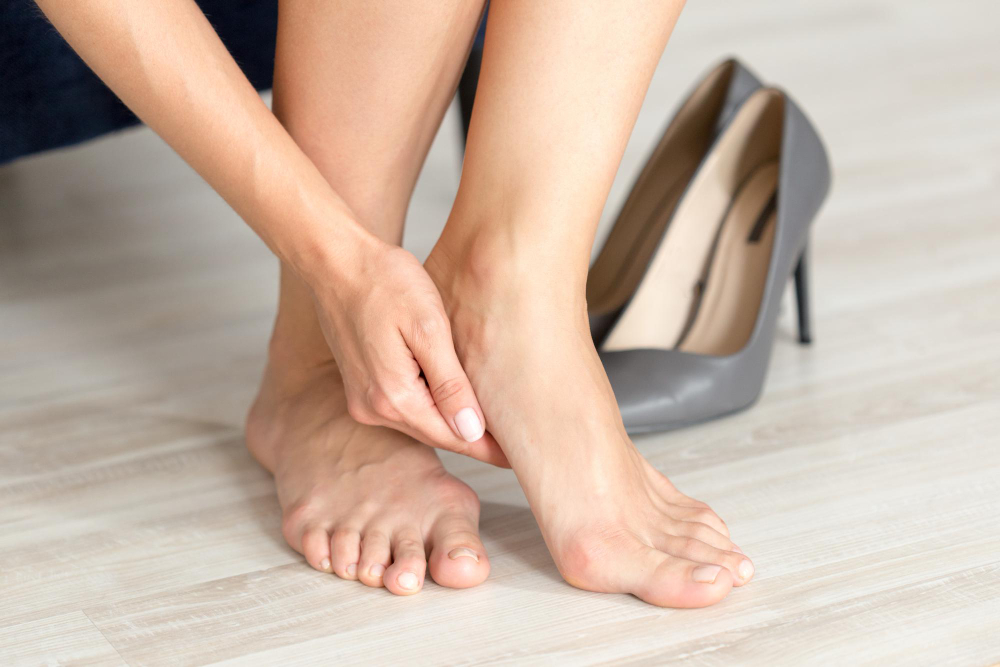
Myth 2: Only Children Have Flat Feet
Fact: Flat feet are common in children, but adults get them too. Research demonstrates that children aged 3-5 years show a prevalence of 30.9% for flat feet, decreasing significantly to 11.3% in children aged 6-7 years.
In infants and toddlers, flat feet are completely normal because the arch develops gradually during childhood.
But here’s what most people miss: Adults can develop flat feet later in life due to:
- Injury,
- Obesity,
- Diabetes,
- Arthritis,
- Age-related changes, like weakening tendons (especially the posterior tibial tendon).
Studies show that adult acquired flat foot prevalence ranges from 10-20%, and among medical students aged 17-23 years, bilateral flat foot prevalence is 11.6%.
So, if you or a loved one notices fallen arches in adulthood, it’s not unusual or abnormal, but it’s worth consulting an orthopedic specialist if there’s pain or instability.
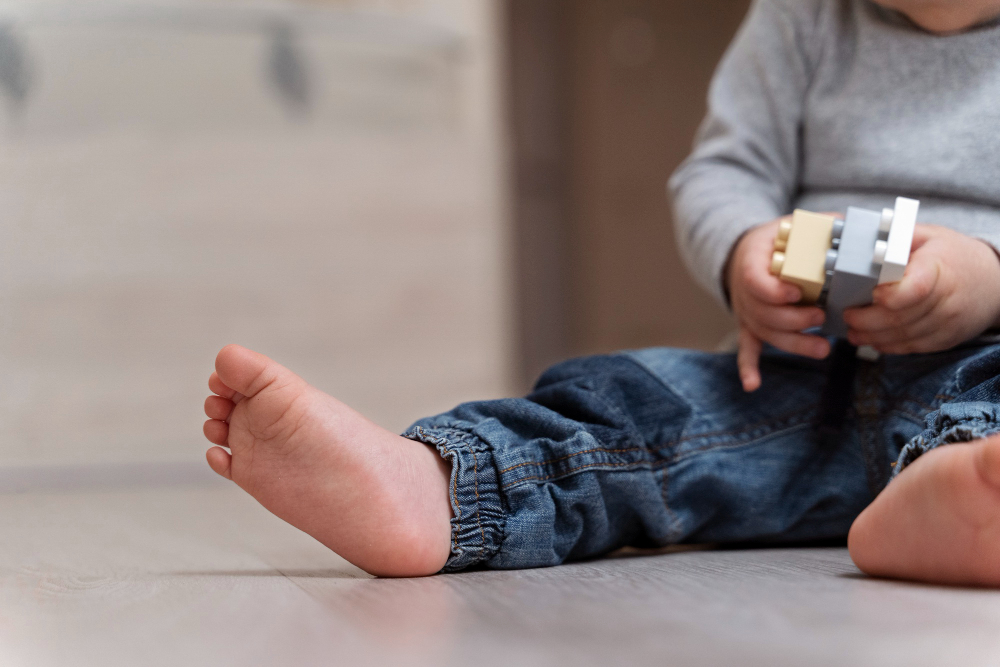
Myth 3: Flat Feet Always Require Surgery
Surgery should be a last resort, not the first line of treatment. Most flat foot problems—especially if mild or moderate—can be managed effectively with conservative (non-surgical) approaches. Research demonstrates that nonsurgical treatment has an 87.5% success rate for adult-acquired flatfoot over a 27-month observation period.
Nonsurgical treatments include:
- Custom orthotic insoles,
- Proper footwear (with the right support),
- Physical therapy,
- Weight management,
- Stretching and strengthening exercises.
Studies show that custom orthotics can reduce foot pain by redistributing pressure across the entire foot, while foot orthoses may have positive impacts across a range of outcomes, including pain, foot posture, gait, function, and structural measures.
Surgery is considered only when:
- Nonsurgical methods fail to relieve significant pain,
- There is a structural deformity causing severe disability.
When surgery is necessary, success rates are encouraging. Flat foot surgery success rates range from 80-98%, with one study showing patient satisfaction rates of 47.4% satisfied and 41% very satisfied with surgical outcomes.
Dr. Tarkit Modi’s advice: Early evaluation and tailored therapy get you back on your feet without the need for invasive procedures in most cases.
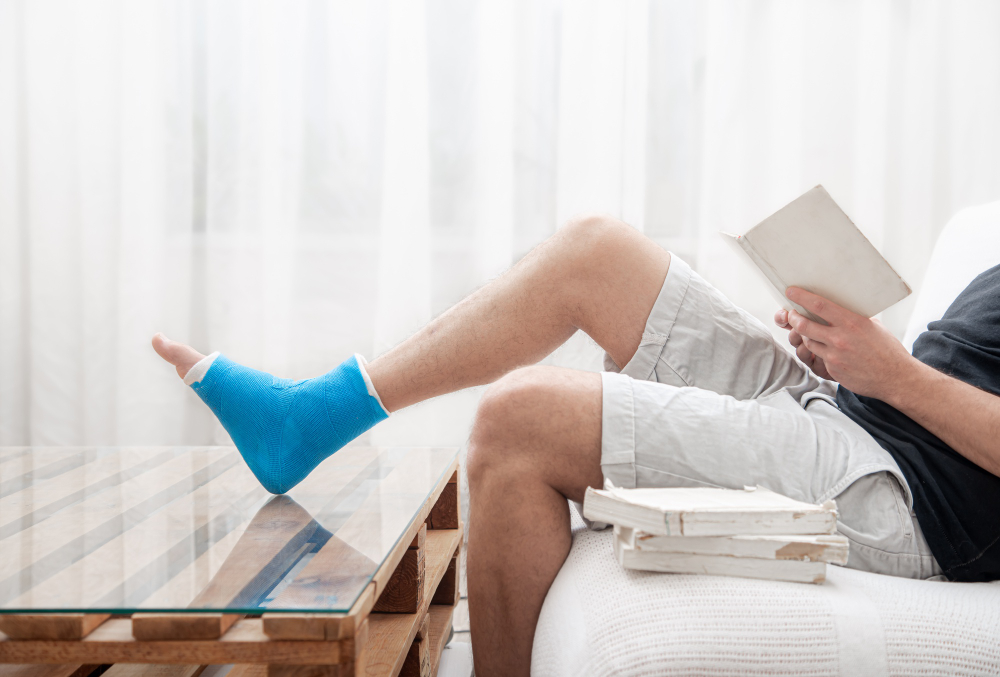
Myth 4: Flat Feet Prevent You from Playing Sports
Think you’ll never play football, run marathons, or dance because of flat feet? Think again! Many elite athletes, including world champions and Olympians, have flat feet.
Research indicates that around 25% of the population may have some degree of flat feet, yet countless individuals with this condition participate in sports at all levels.
Key points:
- What matters more than the arch is strength, stability, and conditioning.
- Supportive footwear and proper techniques help prevent injuries.
- Physical therapy can enhance foot function and prevent strain.
Post-surgical studies show that 36.6% of patients managed to resume low levels of sports activity, 40% were able to perform moderate sports activity, while 23.3% were active or very active and could perform intense physical activity.
Flat feet should not keep you from pursuing your athletic dreams. With guidance from an orthopedic specialist, most people with flat feet enjoy full, active lifestyles.
Myth 5: Flat Feet Are Always Abnormal
Flat feet are not automatically a sign of poor health or “abnormality.” This foot type is simply a variation in human anatomy, just like having brown eyes or curly hair.
Research shows that global prevalence ranges from 13.6% to 27.4% depending on the population studied, making flat feet a relatively common condition.
Sometimes, families share flat feet as an inherited trait. Studies reveal significant associations between flat feet and factors like male gender, body mass index, and geographic location. In such cases, having flat feet is “normal” for you, as long as it’s not accompanied by pain, stiffness, or functional problems.
If there’s no discomfort or difficulty with movement, no treatment is necessary.
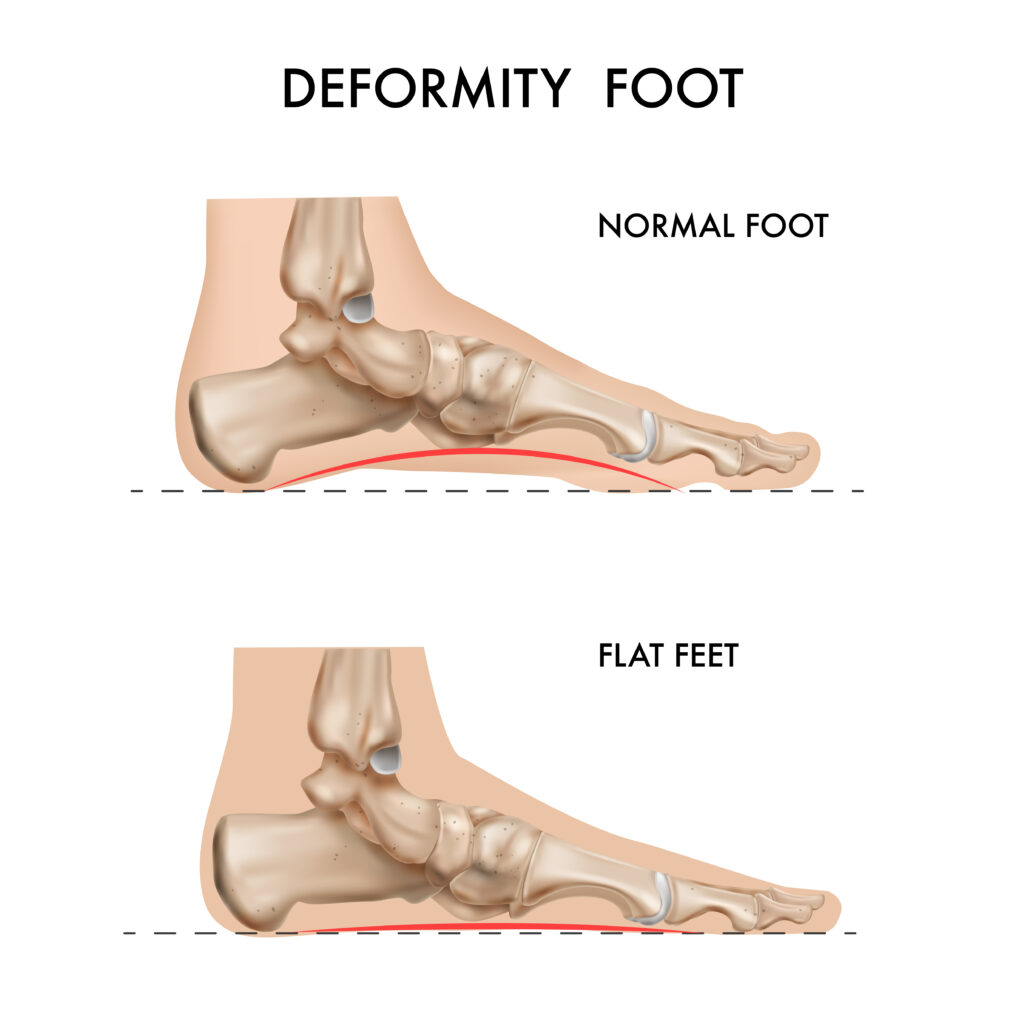
Practical Steps: When Should You See an Orthopedic Specialist?
You should seek medical advice if:
- You have persistent pain or swelling in your feet or ankles,
- Flat feet are causing problems such as bunions or hammertoes,
- You notice your foot shape changing suddenly or rapidly (especially in adults),
- You have difficulty walking or standing for long periods.
Research shows that 78.12% of patients with adult-acquired flatfoot are obese (BMI ≥ 30), highlighting the importance of weight management in treatment plans.
Timely intervention can prevent future complications and help you stay active.
Tips for Healthy Feet from Dr. Tarkit Modi
- Choose supportive shoes: Avoid cheap, flat-soled footwear without arch support.
- Maintain a healthy body weight: Extra kilos increase stress on arches and joints.
- Stay active: Gentle exercise improves circulation and foot strength.
- Practice foot stretches: Regular stretching keeps muscles flexible and strong.
If you have flat feet, remember: You are not alone, and you are not “broken.” With 15.7% of children and 10-20% of adults affected by flat feet, this is a common condition that can be effectively managed. With accurate knowledge, practical steps, and guidance from trusted orthopedic experts like Dr. Tarkit Modi in Indore, you can step confidently toward a healthier, pain-free future.
Research consistently shows that conservative treatment is successful in the vast majority of cases, with surgical intervention reserved for severe, symptomatic cases that don’t respond to non-operative management.
For personalized consultation or advanced treatment options, book an appointment with Dr. Tarkit Modi—Indore’s leading orthopedic specialist.
Frequently Asked Questions
1. What are the main causes of flat feet?
Flat feet can be inherited or caused by factors like injury, aging, obesity, arthritis, or medical conditions that weaken foot tendons. Research shows associations with male gender, higher BMI, and certain geographic factors.
2. Do flat feet need treatment if they don’t hurt?
Not always! If there’s no pain or mobility problem, treatment is usually unnecessary. Studies show that many people with flat feet live normally without any intervention.
3. Can children outgrow flat feet?
Yes, many children naturally develop foot arches by age 6 or 7. Research shows flat foot prevalence drops from 30.9% in ages 3-5 to 11.3% in ages 6-7, indicating natural arch development.
4. Are orthotics effective for flat feet?
Custom orthotic insoles can provide support and pain relief for people with symptomatic flat feet. Studies demonstrate that orthotics can reduce foot pain by redistributing pressure across the entire foot.
5. How can I prevent pain from flat feet?
Supportive shoes, insoles, weight management, regular stretching, and guided strengthening exercises can help prevent discomfort. Research shows these conservative measures are successful in 87.5% of cases.
6. Can flat feet cause knee, hip, or back pain?
Yes, in some cases, overpronation (inward rolling) from flat feet may affect posture and joints higher up the body, leading to knee, hip, or back pain.
7. Is surgery safe for correcting flat feet?
Surgery is generally safe but only recommended when conservative treatments fail. Success rates range from 80-98%, with high patient satisfaction rates in appropriate candidates.
8. Can flat feet get worse over time?
Sometimes. Progressive adult flatfoot (from tendon dysfunction or arthritis) can worsen without timely evaluation and appropriate care, particularly in obese patients or those with underlying conditions.

